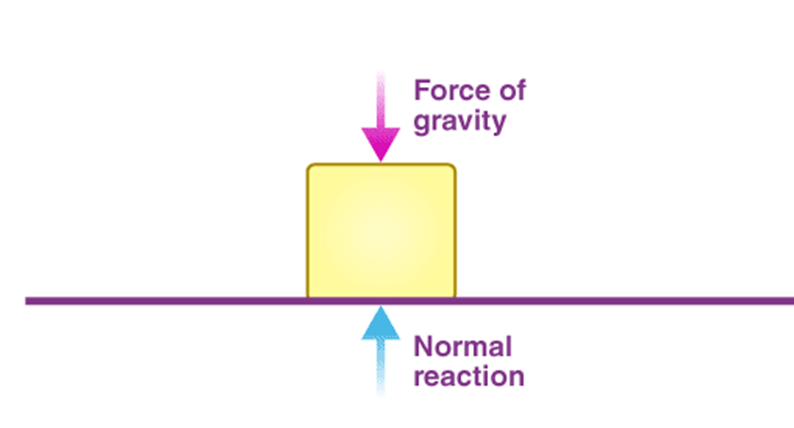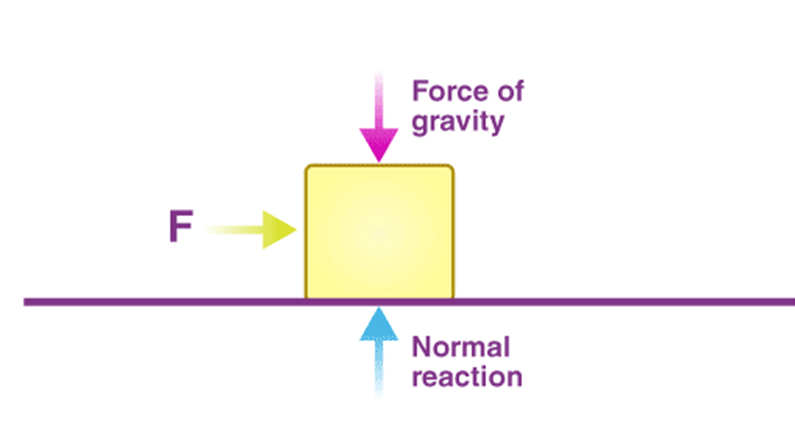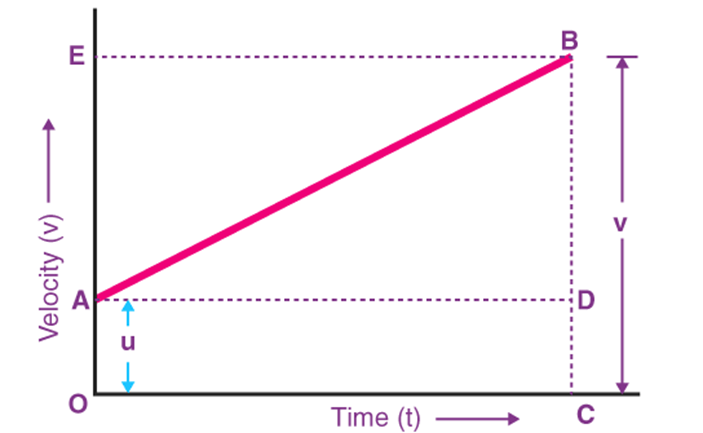NEWTON’S LAWS OF MOTION
Sir Isaac Newton published three laws in the 17th century. Newton's laws of motion imply the relationship between an object's motion and the forces acting on it.

Sir Isaac Newton
----------------------------------------------------------------------------------------------------------------
Newton’s First Law of Motion
Newton’s first law of motion states that-
A body remains in the state of rest or uniform motion in a straight line unless and until an external force acts on it.
Or in short we can say Newton’s first law of motion, a body will not start moving until and unless an external force acts on it. Once it is set in motion, it will not stop or change its velocity until and unless some force acts upon it once more. The first law of motion is sometimes also known as the law of inertia.
There are two conditions on which the 1stlaw of motion is dependent:
Objects at rest:When an object is at rest, velocity (v = 0) and acceleration (a = 0) are zero. Therefore, the object continues to be at rest.
Objects in motion:When an object is in motion, velocity is not equal to zero (v ≠ 0), while acceleration (a = 0) is equal to zero. Therefore, the object will continue to be in motion with constant velocity and in the same direction.
NOTE :- External Force
An external force is defined as a change in mechanical energy, which is either kinetic energy or potential energy in an object. These forces are caused by external factors. Examples of external forces are friction, normal force and air resistance.
Let Us Understand the First Law of Motion by an Example
We take the block on a flat surface, that is, the surface is not affected by friction. The block is at rest, ie. does not move
Let us now consider the forces acting on the block. The only forces acting on the block are gravity and the normal reaction of the surface. It is not affected by a horizontal force. Since the vertical forces are equal in magnitude, they cancel each other, so no external force is applied to the block. Since this block is at rest, we can say that it confirms Newton's first law of motion.

Now, if we apply a constant force F on the block in a horizontal direction, it will start moving with some constant acceleration in the direction of the applied force.

Thus, the first law of motion is confirmed again.
Note:Newton’s laws are valid only in inertial frames of reference.
Newton’s First Law of Motion Example in Daily Life
Using a seat belt while driving in a car is an example of Newton's 1st law of motion. When an accident occurs or the car is braked suddenly, the body tends to maintain inertia and move forward, which is likely to result in death. To prevent such accidents, seat belts are used to prevent your body from moving forward due to inertia and avoid hazards.
DERIVATION OF EQUATION OF MOTION
The equations of motion can be derived using the following methods:
- Derivation of equations of motion by Simple Algebraic Method
- Derivation of equations of Motion by Graphical Method
- Derivation of equations of Motion by Calculus Method
In the next few sections, the equations of motion are derived by all the three methods in a simple and easy to understand way.
DERIVATION OF FIRST EQUATION OF MOTION
For the derivation, let us consider a body moving in a straight line with uniform acceleration. Then, let the initial velocity beu, acceleration is denoted asa, the time period is denoted ast, velocity is denoted asv, and the distance travelled is denoted ass.
1. Derivation of First Equation of Motion by Algebraic Method
We know that theacceleration of the body is defined as the rate of change of velocity.
Mathematically, acceleration is represented as follows:
a =$\frac{v-u}{t}$v−ut
wherevis the final velocity anduis the initial velocity.
Rearranging the above equation, we arrive at the first equation of motion as follows:
|
v = u + at |
2. Derivation of First Equation of Motion by Graphical Method
The first equation of motion can be derived using a velocity-time graph for a moving object with an initial velocity ofu, final velocityv, and accelerationa.

In the above graph,
- The velocity of the body changes fromAtoBin timetat a uniform rate.
- BCis the final velocity andOCis the total timet.
- A perpendicular is drawn fromBtoOC, a parallel line is drawn fromAtoD, and another perpendicular is drawn fromBtoOE(represented by dotted lines).
The following details are obtained from the graph above:
The initial velocity of the body,u=OA
The final velocity of the body,v=BC
From the graph, we know that
BC = BD + DC
Therefore,v = BD + DC
v = BD + OA(sinceDC = OA)
Finally,
v = BD + u(sinceOA = u) (Equation 1)
Now, since the slope of a velocity-time graph is equal to accelerationa.
So,
a = slope of line AB
a = BD/AD
SinceAD = AC = t, the above equation becomes:
BD = at(Equation 2)
Now, combiningEquation 1 & 2, the following is obtained:
|
v = u + at |
3. Derivation of First Equation of Motion by Calculus Method
Since acceleration is the rate of change of velocity, it can be mathematically written as:
a =
Rearranging the above equation, we get
adt = dv
Integrating both the sides, we get

Rearranging, we get
|
v = u + at |